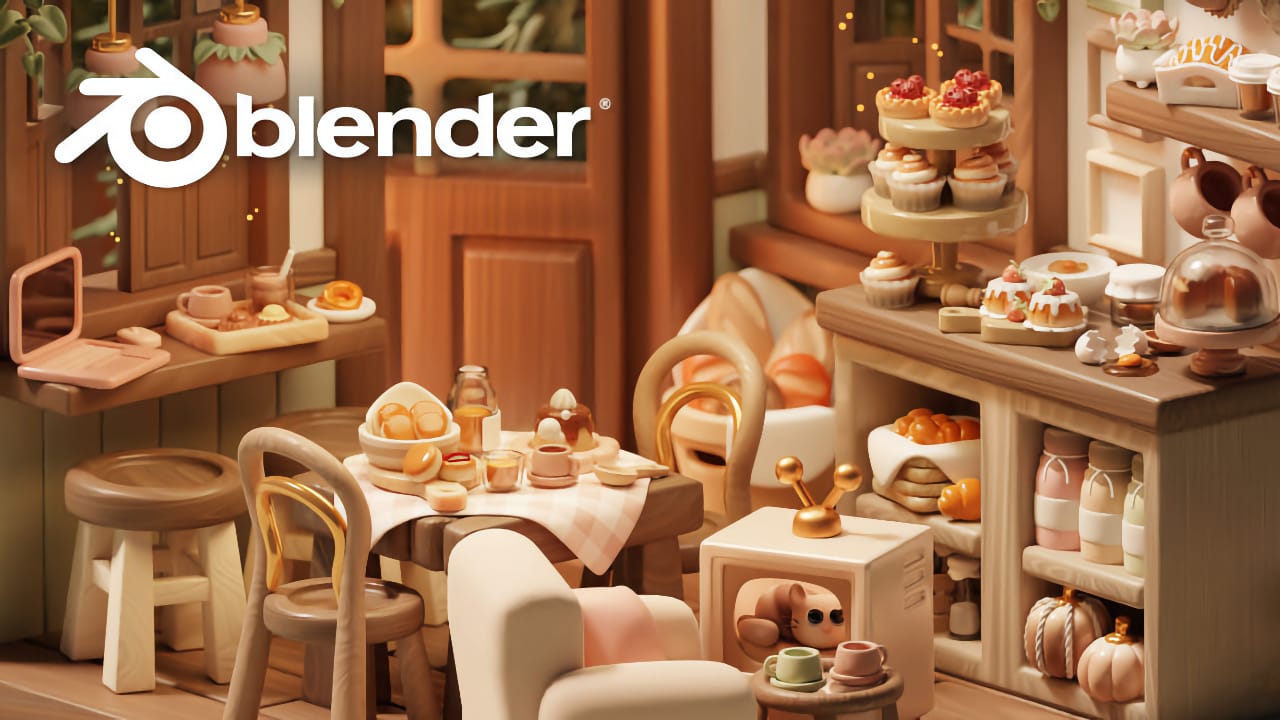
Blender development continues at pace with a whole host of new features added to the recent v3.5 release.
The Blender Foundation has been releasing an impressive series of updates since launching Blender 3.0 last year, and Blender 3.5 is definitely living up to the expectations of its predecessors. The new features are definitely something to write home about. Here are some of the highlights.
Procedural hair
Hair used to be based on a particle system, which was a common method for simulating hair and fur in 3D applications. In version 3.3 Blender got curve based hair. In version 3.5, Blender hair got a complete makeover, starting with Hair Nodes. There are nodes to generate hair curves on a surface, interpolate or duplicate them, style nodes, deformation nodes, the works in other words.
The Blender Foundation has had plans to develop an asset library in Blender for some time, and the first iteration of that with the first suite of built-in assets is here with the hair assets. The asset library provides an elegantly organized browser with preview images for each node. They can be dragged onto a set up in the viewport or into the geometry nodes editor.
Vector displacement maps
Standard displacement maps are essentially height fields used to create details on surfaces at render time. Having only one dimension imposes some limitations, the most obvious being that there is no way for displacement to create overhanging geometry. Since Blender's Draw brush uses displacement maps, it wasn't possible to create things like caves with sculpting. The Draw brush now supports Vector Displacement Maps, moving Blender sculpting quite a bit closer to ZBrush sculpting.
Viewport compositor
This one is big. It enables using Blender's node based compositing within a 3D rendered viewport, provided that it's set to rendered mode. Open the compositor editor and composite a background behind the model, then go back and continue working on the model while the viewport shows the composite live.
There's more!
The new release also includes a host of smaller updates and behind-the-GUI updates, like support for Metal in the viewport enabling Cycles viewports on OSX and Light Tree for Cycles, improving rendering performance in scenes with large numbers of physically based lights. Blender is now able to import and export USDZ, and Cycles has support for non-uniform spot lights and renders area lights with less noise. Cycles can now support Open Shading Language nodes, though currently only with OptiX.
The Blender Foundation has also completed migrating the Blender codebase to a new code and version management platform.
Future roadmap
Blender will be shifting back to a three releases per year schedule. V3.6 will be the next LTS release, and will have two years of support, while development continues toward Blender 4.0 which is due toward the end of 2023. There is a lot in the pipeline. The Brush Assets and The Future of Character Animation are still in early stages, and Vulkan support is in development to enable Blender to use hardware acceleration on AMD and Intel GPUs.
Blender updates definitely seem to be getting bigger, and the shift back to three annual releases from four is to provide more time for testing and documentation, which in turn will lead to more robust releases and enhance the learning curve for new features.
Blender releases in 2022 were impressive, and , by the looks of Blender 3.5, the Foundation is continuing to keep its bar set high.
Tags: Post & VFX


Comments